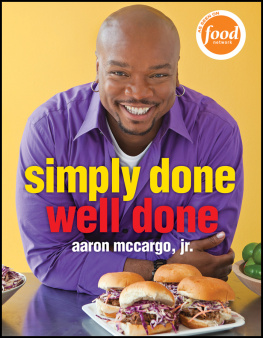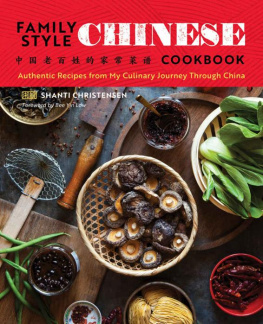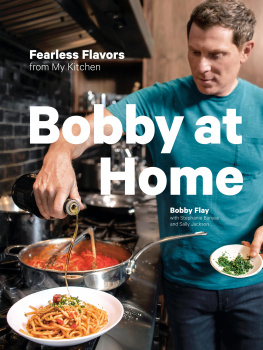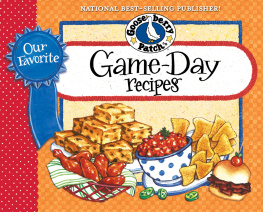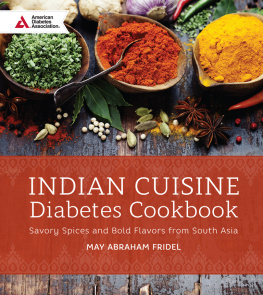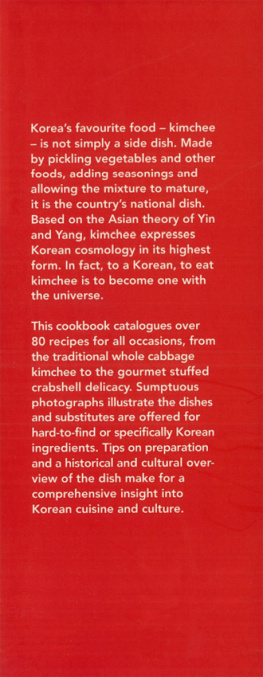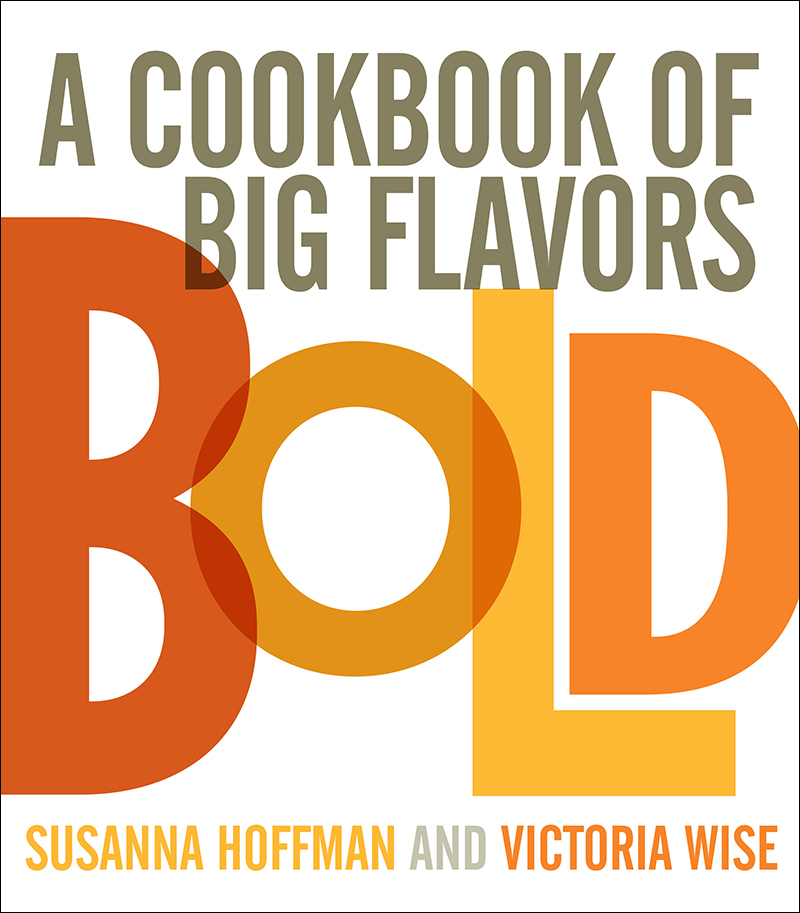Bold
A Cookbook of Big Flavors
Susanna Hoffman and Victoria Wise
Workman Publishing New York
We dedicate this book to each other and our decades of collaborating.
Special Thanks:
A book cannot get cooked without the help of many.
As always, the people at Workman Publishing have been a dream team. We would like to thank Mary Goodbody for the first sharp-eyed read; Carol White, who oversaw the many details of copyediting and production; Julie Primavera for production; Selina Meere and Anwesha Basu, who handled the monumental publicity, Jessica Wiener for marketing, Barbara Peragine for typesetting, and the entire staff of the sales department for their efforts. Special thanks go in particular to Erin Klabunde, who facilitated all the books back-and-forthing and Lisa Hollander for the stunning layout and design.
To our longtime caring editor, Suzanne Rafer, we honestly and truly cannot thank you enough. Our love and praise forever. Finally, in memoriam, we want to declare our heartfelt gratitude to Peter Workman for decades of encouragement and for whittling our original title down to one great word, not unlike his own character, BOLD.
For their ongoing encouragement and life support, abiding love and appreciation go to Rick Wise, Jenan Wise, Arayah and Paul Rude, Deborah and Jerry Budrick, Beverly Jenanyan, Gary Jenanyan, Kristine Potter, Jason Williams, Bob and Jean Goldberg, Barry and Barbara Deutsch, Dan and Deborah Kashinsky, Veronica Aiken, Martha Casselman, Gabriella Aratow, Jesse, Liza, and Kalea Aratow, Joe Cooley, Deborah and Levi Bendele, Levi and Isabelle Bendele, Rebekah and Harry Spetnagel, Mark Bendele, Marshall Whiting and Richard Arnold, Paula Moss and David Karabell, Anthony and Kerry Oliver-Smith, and to all our supportive and much loved community of friends in Telluride, New York, and California.
Contents
Introduction
American Cooking
Bold is a cookbook that celebrates the glorious cohesion of foods that make up American cuisine. Its cornucopia has been crafted from the stupendous ingredients, flavors, and dishes derived from all the people who have stepped upon its shores, east to west, northern tip to southern gulf, along with the inventive creations of the millions of the nations residents. All of it has merged into a single fabulous, kaleidoscopic menu.
It is a bold cuisine. It steps away from traditions and strictures, it takes license for caprice with a fresh understanding of the old ways and uses them as leaven for the new. From its first days, America has been described as a melting pot. Used as a metaphor, the term first signified the hodgepodge of people who inhabit this nation. It referred to the great experiment where, for the first time in history and no matter what their origin, all people had to do was be born on the land or, once residents, pass a test to become fully vested citizens. But to the benefit of us all, the melting pot evolved into something much more than the people and a metaphor. It came to define the American plate.
Until recently, general opinion has held that the foods eaten in America, along with the cooking styles, remained disjointed according to differing ethnic groups. If there were any overarching opinion concerning American food, it was that the nation embraced the cooking of northern Europe as its culinary model. But from the get-go that was a myth. Americas very melded, very mixed cuisine has, in fact, a long history. From the first days off the Mayflower, the Viking long boat, the Spanish galleon, the sustaining diet of the new arrivals incorporated the victuals already being hunted, fished, gathered, and grown by Americas first settlers, the Native tribes, and many of the most widely eaten American foods did not exist in Europe.
What ensued has never happened before: An intermarriage took place, a crossing of ethnic and social boundaries forging with it a unique culinary fusion. At this point in American history, after four hundred years of pairing, few among the citizenry can boast a monochromatic heritage. Some dozen or more generations of mixed matrimony have produced offspring with a veritable potpourri of ethnic strains. Communities are populated by a splendiferous mishmash of cultural components. All partake of a multitude of differing foods in restaurants, friends homes, and at their own tables.
American social organization has also involved a great deal of mobility. People of all backgrounds move about the country again and again until not only has the shared cuisine overarched ethnic diversity; it has collapsed much class distinction. Everyones children eat pizza. The entire population eats pot stickers. Pretty much everybody partakes of the whole enchilada.
Vigorous New Additions to the Bill of Fare
On top of all that, over the last three decades many other changes in the American diet have occurred. Trends appeared and spread, and from them people discovered yet more delectables and ways to cook. Beyond our time-honored dishes and the first exotic, often Chinese edibles, along came highly compelling California cuisine. The fanciful compositions of Pacific Rim cooking appeared, along with the toothsome tastes of northern Italian. Irresistible Japanese sushi changed the way we think of cooked and raw. Farmers markets sprung up. Health concerns elicited the call for more vegetables and fish. The organic and locavore movements arose in response to foods shipped long distances or preserved for long shelf life to the detriment of both nutrition and flavor. The tide turned against pesticides and additives. In consequence, the populace evolved into not only worldly eaters but ones who are almost fanatic about fresh and wholesome food.
Together the culinary infusions and tantalizing trends swept over all, from coast to coast. While there remain cherished regional differences in American cuisine according to local food specialties and the customs of the original settlers, such variations prevail less and less. New England lobster feasts are held in the Great Basin states. People in Maine eat tacos. Minnesotans down Cajun blackened catfish, while folks in Louisiana eat New York cheesecake. Southeast Asians eat roast beef, falafel is relished by Italians on Philadelphias South Side, and Jewish bagels have become the entire nations quotidian breakfast. America is not only a wide-open world; its one world when it comes to food.
Bold honors the great mlange. It is replete with recipes for the amazing, ever-changing round of dishes that make up American cooking today. It venerates traditional foods that Americans have long preparedsuch as the thick-cut steak and the still-beloved mound of potatoesbut it also pays homage to the new styles and tastes the countrys ethnic mix has added to the pot. It acclaims the heartlands bounty and extols the recent innovations, along with the fresh and healthy choices, that have come to be the dining preference over the last several decades as well. Call it a return, or call it a brand-new epiphany; both are accurate.
At the same time Bold celebrates a long-standing and revered American custom: the full plate. Many who arrived on Americas soil were hungry. The new nation provided, often for the first time, a plenitude of food to eat, a dazzling opportunity to fill up and feel secure. Here privation was far from the door. Americans have long been rightly deemed the People of Plenty, a people blessed with abundance. In consequence, the big, full meal became more than a gratification and more than a pleasure to most. It became a proudly displayed and ever-practiced custom. Indeed, it became a symbol. Despite the small plate fancy, trendy snack and tidbit meals, beyond the wave of dainties, mostly Americans want a big dinner. Now, though, we like that dinner bolder. We want our traditional copiousness, but we want it vivid, scrumptious, and varied.


